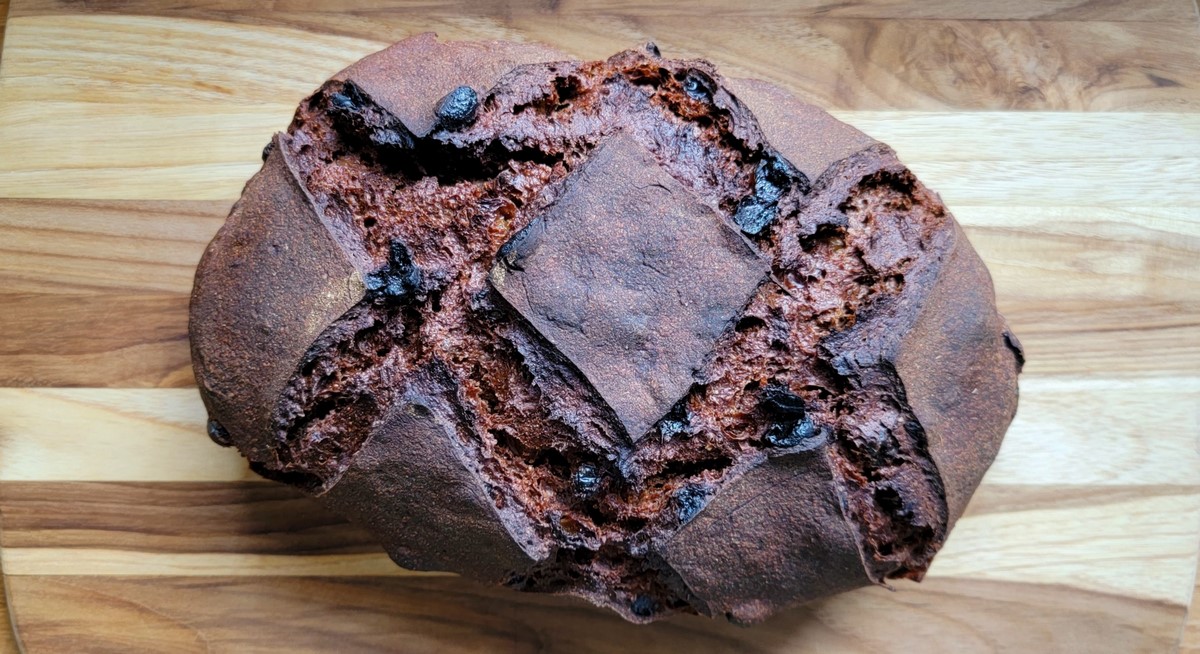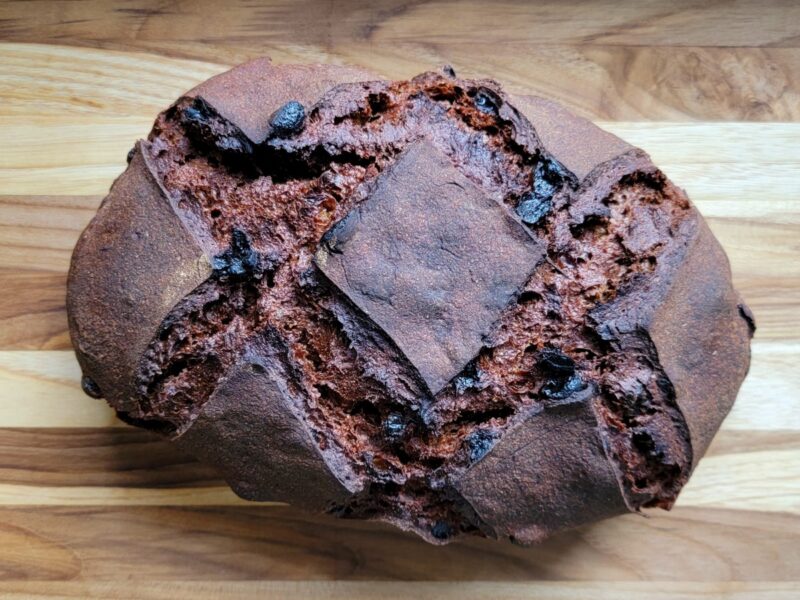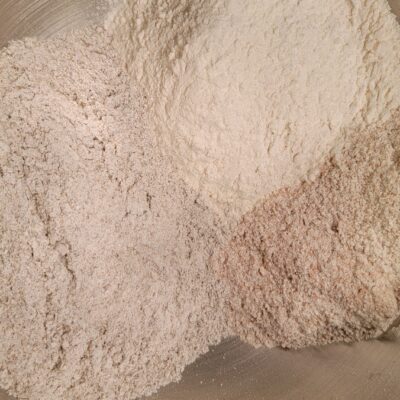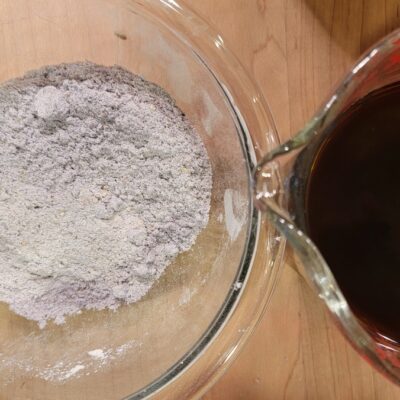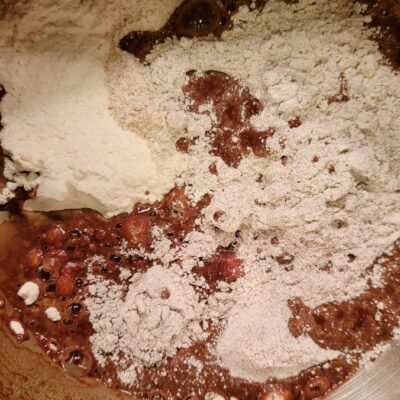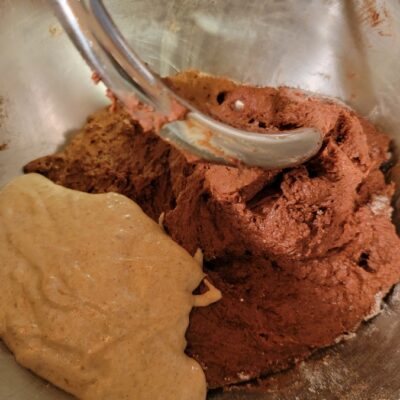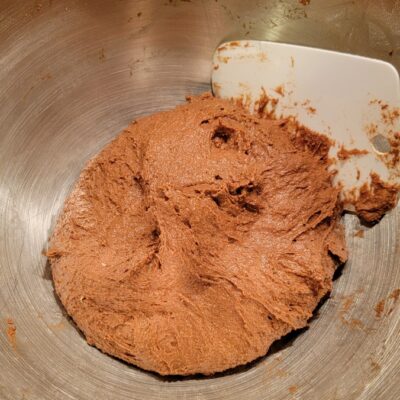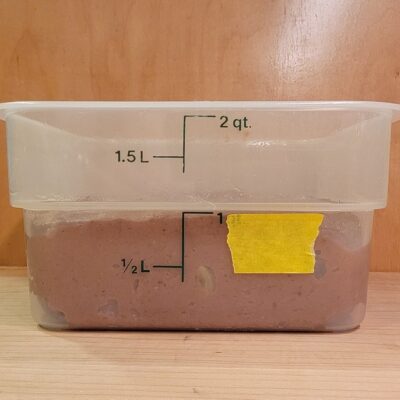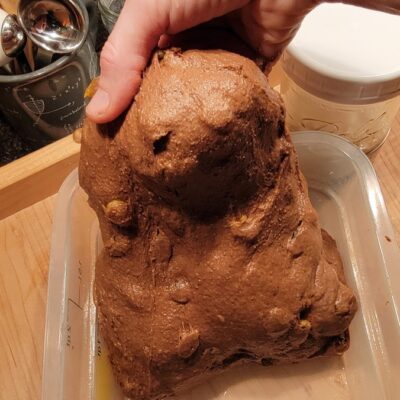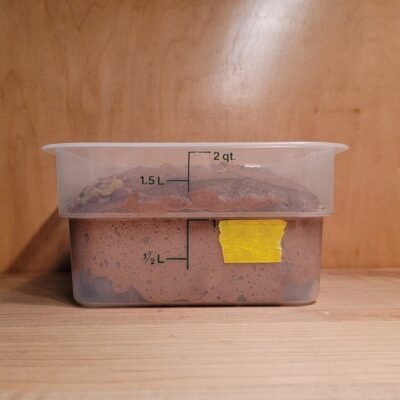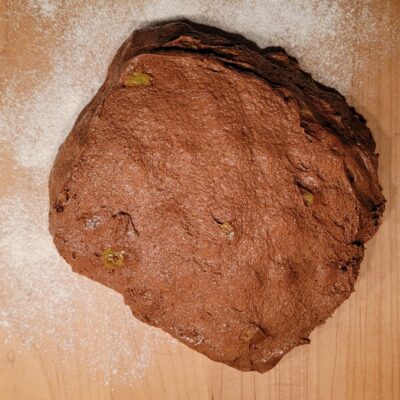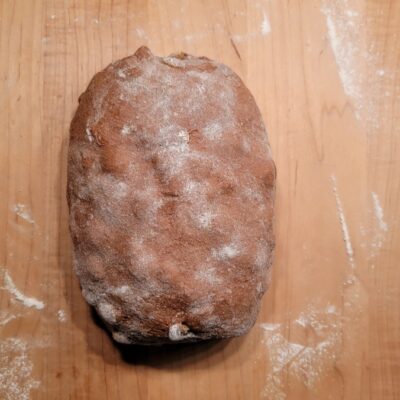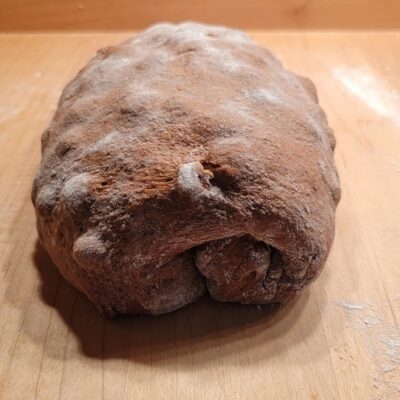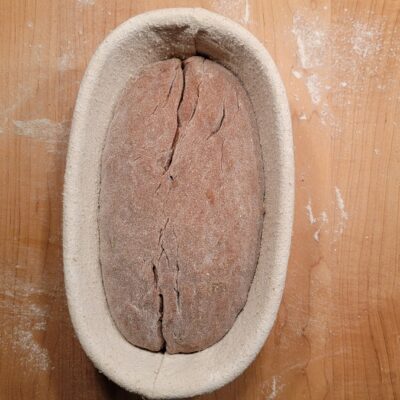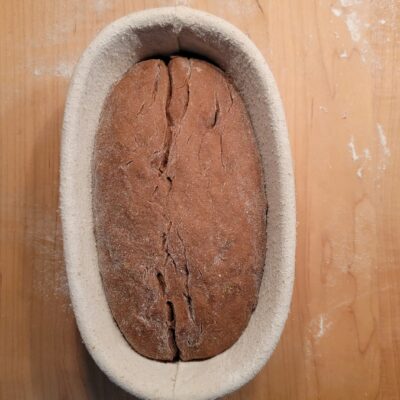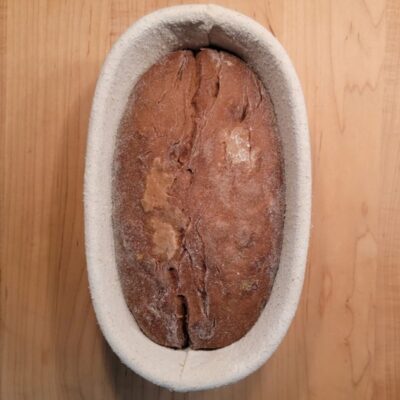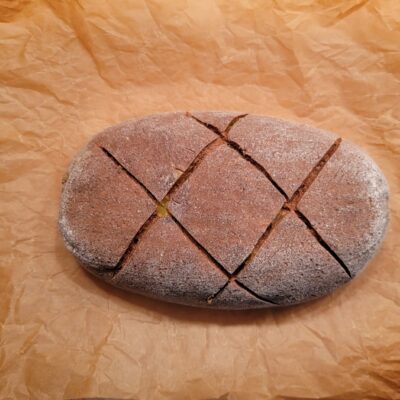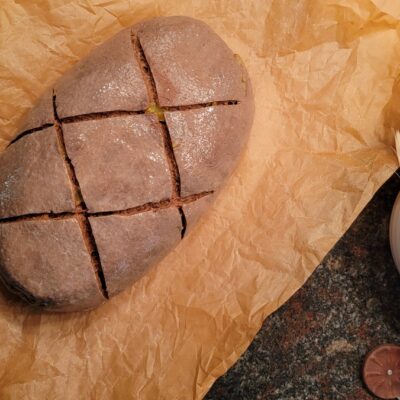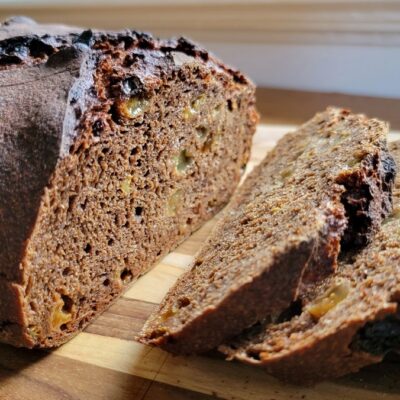Pumpernickel Raisin Bread
Here is a pumpernickel raisin bread with bold flavors that balance out in the final product. Cocoa, coffee, molasses, rye, corn, wheat, and raisins meld together during a slow sourdough fermentation, and the result is chewy and intoxicating. This is not quite a dessert bread, but certainly with a layer of melted butter or made into French toast, it’ll be a decadent treat.
Ingredients
- 195 grams bread flour (1 1/2 cups)
- 130 grams rye whole grain flour (1 cup)
- 65 grams rouge de bordeaux whole grain flour (1/2 cup)
- 65 grams milled heirloom blue conico corn (1/2 cup)
- 350 grams fresh-brewed coffee (scant 1 1/2 cup)
- 80 grams molasses (1/4 cup)
- 24 grams cocoa powder (3 Tbsp)
- 9 grams salt (1 3/4 tsp)
- 100 grams sourdough starter (1/3-1/2 cup)
- 175 grams raisins (scant 1 cup)
- optional 20 grams brown sugar (1 1/2 Tbsp), see recipe note
Instructions
Mixing
- Put the raisins in a bowl, cover with water, and set aside to soak for at least an hour.
- In the bowl of a stand mixer, combine the bread flour, rye flour, and rouge de bordeaux flour. You can mix with a silicone spatula or dough scraper if you don’t have a stand mixer.
- In different bowl, scald the corn flour with the hot coffee, then add the molasses, cocoa powder, and salt to dissolve them and also to help cool the scald.
- When the scald is under 90F, pour it into the flours. Add the sourdough starter and thoroughly mix. The dough will be sticky but over time it will strengthen a bit. See photos in the gallery.
- Cover and let the dough rest about 30 minutes.
- Thoroughly drain the raisins, then mix them into the dough.
Bulk Fermentation
- Transfer the dough to a lightly oiled bucket or straighwalled container and note the level. Cover and let the dough rest 30 minutes. Do two rounds of stretching and folding on the dough separated by a 30-minute rest.
- When the dough has expanded by about 40%, it is ready to shape. This dough doesn’t ferment very quickly, so plan for 8-12 hours from when you mixed it, depending on the ambient temperature.
Shaping and Final Proof
- Flour your work surface and scrape the dough out onto it. Shape the dough using a bench knife and more flour as needed to deal with the stickiness. Place it seam-side up in a floured proofing basket.
- Cover and let rise again for about an hour at room temperature, then refrigerate overnight (8-16 hours). Leave it at room temperature longer if the ambient temp is cool. You can also bake the dough the same day if you proof for 2+ hours or longer at room temperature. Because of the heavy raisins in the dough, it will not expand as much in the basket as you may be used to.
Baking
- Preheat your oven and baking vessel to 500F for 30 minutes.
- Flip the dough out of the proofing basket and onto a sheet of parchment paper. Score the dough and brush it with water if you want a dark, less floured crust.
- Placed the dough in the baking vessel and bake at:
- 500°F for 20 minutes, lid on
- 425°F for 15 minutes, lid on
- 425°F for 15 minutes, lid off
- When baking is complete, the bread should have an internal temperature over 205F.
- Let the bread cool for a couple of hours before you slice it.
Notes
Use the brown sugar if you want the bread to edge farther into dessert or breakfast pastry territory. The sweetness makes the cocoa powder read more chocolatey.
- Ingredients
- Rye, rouge de bordeaux, and bread flours
- Blue corn and coffee scald
- All ingredients except starter
- Sourdough starter
- 30 minute rest
- Adding raisins
- Transferred to bucket
- First stretch and fold
- Second stretch and fold
- End of first rise
- Fermented dough
- Shape with bench knife
- Start of the final proof
- After 40 minutes at room temp
- Refrigerated
- Scored
- Brush with water
- Baked
- Cooled about 5 hours

